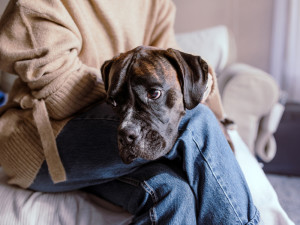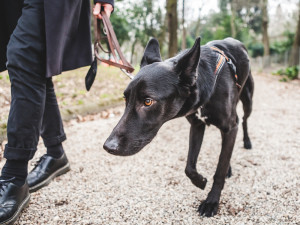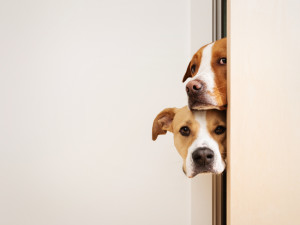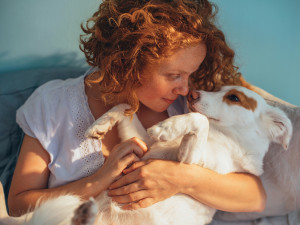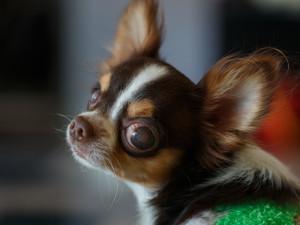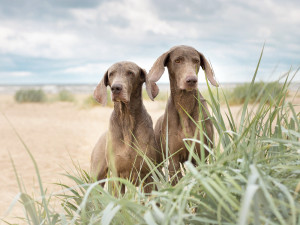How to Tell If Your Dog Is a Hugger – Or Not
Boundaries, folks. Boundaries
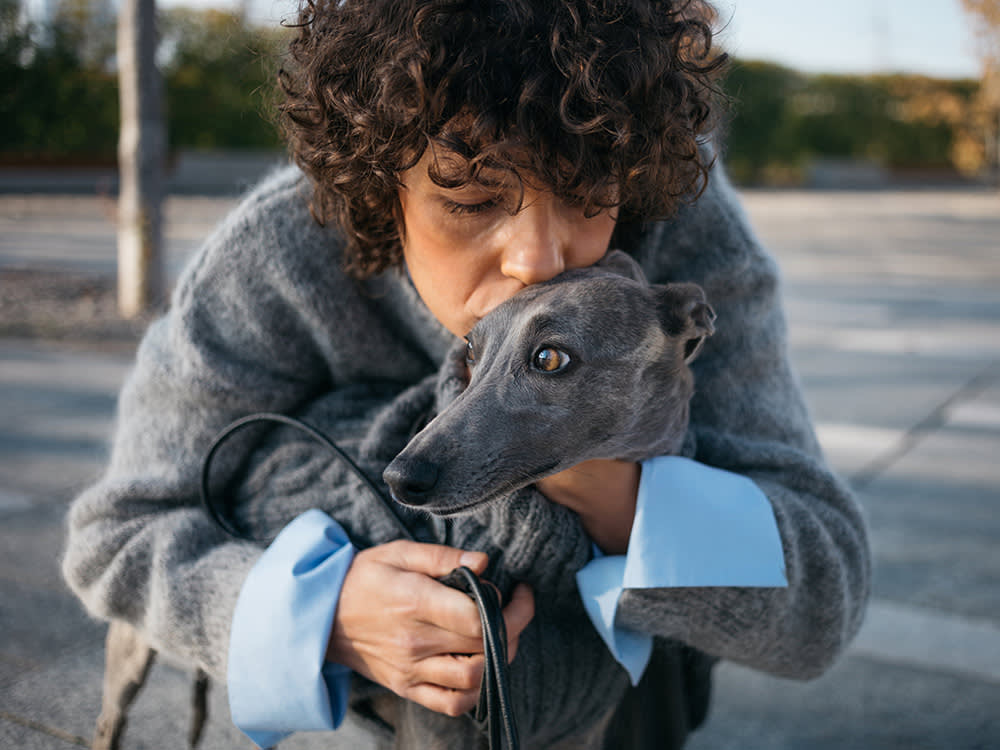
Share Article
Not everyone is a hugger. Post pandemic, many humans are still incredibly OK with the concept of social distancing (and will be for years to come). Your dog, on the other hand, just might not want a hug.
Animal behaviourists, including myself, have regularly expressed caution when it comes to hugging dogs because, well, most dogs don’t like it. This area hasn’t been formally studied, but Stanley Coren, PhD, a professor of psychology at the University of British Columbia, reviewed the data and shared his takeopens in new tab in an informative post.
Here’s how you know if you’ve got a hugger – or a pup who prefers a bit of social distancing.
It’s all about signs of stress
Coren viewed 250 random photos on the internet of people hugging dogs. For each image, he determined whether the dog fit one of three categories: the dog appeared stressed or anxious; the dog appeared relaxed and at ease; the dog appeared neutral or ambiguous.
Signs of stress can be tongue-flicking, ears down, face averted, eyes showing ‘half-moons’ of white, tightly closed mouth, rigid facial muscles and furrowed brows. Dogs who are relaxed and happy tend to have open mouths, relaxed facial muscles, and no signs of stress. Coren only included photos in which the dog’s face was visible and where no other obvious stressor was present, for example, being picked up while being hugged.
Coren found that out of the 250 dogs, 204 dogs (81.6 percent) showed one or more signs of stress, discomfort, or anxiety, 27 (10.8 percent) of the dogs showed either neutral or ambiguous reactions to being hugged, and 19 (7.6 percent) seemed comfortable with being hugged. From this data, Coren concluded that it makes sense to recommend that humans refrain from hugging dogs and save their hugs for other humans.
These results aren’t surprising. Based on my behaviour and training experience, I’m inclined to agree that the majority of dogs are not as crazy about hugs as people are. The pictures reviewed by Coren might even underestimate dogs’ dislike for hugging because the pictures were posted by people who presumably want to show their love for their dogs. Coren points out that they are not likely to choose photos that show their dog’s most blatant signs of distress, at least not if they recognise those signs.
Coren’s results have been met with mixed reception
Coren’s suggestion that it is not a good idea to hug dogs has many pet professionals nodding their heads in agreement, but some have also objected to it. Most of the objections are from people saying that their dogs love being hugged. Over the years, I have had countless clients – in private consultations and in classes – who swear that their dogs do like being hugged. However, whenever they embraced their dog to demonstrate, I identified signs of stress. It’s very common for people, especially children, to be bit while hugging a dog, unaware of the stress signals.
When hugged, most dogs show visible signs of anxiety and discomfort. Some tolerate it, but I would at best call their reactions neutral. Rarely will I encounter a dog that doesn’t mind (or has just learnt to stop reacting). Either way, I do not see dogs who are convincingly happy about it. My personal experience is generally in line with what Coren found in his research, though he did see more dogs who were comfortable with hugging than I have.
Very few dogs like hugs, but there are exceptions
Coren’s finding that a minority of dogs were comfortable with hugs will be reassuring to many pet parents who are confident that their dogs love being hugged. I would encourage anyone who feels that their dogs fit into this category to make an effort to be sure. Observe your dog carefully during a hug to check for signs of anxiety, stress or discomfort.
Feeling like your dog is the exception is comparable to the well-known fact that most people think that they are above-average drivers. Similarly, many parents believe that they are in that rare minority of people who do not regularly embarrass their teenagers. Obviously, there are exceptions to any rule, but most people (and dogs) can’t be the exception. This phenomenon is called the ‘better-than-average’ effect.
That said, there are exceptions. It depends on the individual dog, who is doing the hugging, the situation, and how the dog is being hugged. If you hug a behaviourally healthy, non-aggressive dog and then offer them a piece of chicken and do that repeatedly (by which I mean hundreds of times), you are likely to teach them to be happy about hugs.
How you hug your dog makes a difference
You probably feel a little bummed that your pup (most likely) doesn’t share your love for hugs. Let’s be clear, though: this doesn’t mean your dog doesn’t love snuggling and cuddling. A hug is a full embrace with both arms around a dog’s body or neck and is definitely not the same as a cuddle. If you share a strong bond with your dog, they may be more willing to tolerate a hug occasionally – just try not to overdo it. When in doubt, don’t hug the dog. Here are a few pointers to help you determine if it’s OK to hug a dog.
Cuddle with your pup
Dogs who like to snuggle may be happy to lean against someone, but remember it is not the same experience as a hug where a human wraps their arms around them.
Gentle hugs are better
A gentler hug that is not as long, tight or high up on the neck may be easier for dogs to accept.
Always monitor children
Kids are more likely to squeeze too strongly and hang on a dog’s neck, so be sure to carefully observe your dog for signs of distress.
Hugs from dogs are different
Tall dogs who stand on their back legs and put their front paws on a person’s shoulders are often quite happy to give hugs (again, this is different from receiving hugs).
Always check the situation
Don’t try to hug your dog when they’re busy with some other activity, such as eating, or if they don’t appear to be in a good mood.
Don’t hug unfamiliar dogs
While this should be obvious, don’t hug just any random dog. Hugging unfamiliar dogs is a risky proposition that could lead to dog bites.
In short, some dogs are fine if you bring on the love, but it truly depends on the pup. Just like it’s important to get to know a human and ask for consent, your dog needs the same courtesy and has boundaries. Be cool.

Karen B. London, PhD, CAAB, CPDT-KA
Karen B. London, Ph.D., is a Certified Applied Animal Behaviorist and Certified Professional Dog Trainer who specializes in working with dogs with serious behavioral issues, including aggression, and has also trained other animals including cats, birds, snakes, and insects.
Related articles
![A woman holding her dog close.]()
FYI, Your Dog Can’t Stand When You Do These 7 Things
Trust me, I’m a dog trainer
![close up of Chihuahua dog's eye with cataracts]()
Common Eye Problems in Dogs and How to Treat Them
Your dog sees you as their best friend, so keep those eyes healthy
Male Vs Female Dogs: Are There Any Real Differences?
World-renowned behaviourist Patricia McConnell explains
![]()
How to Teach Your Dog to ‘Talk’ at the Touch of a Button
Cognitive science professor Dr Federico Rossano on how Bunny, TikTok’s ‘talking’ dog, is sparking change in how we communicate with our pets

